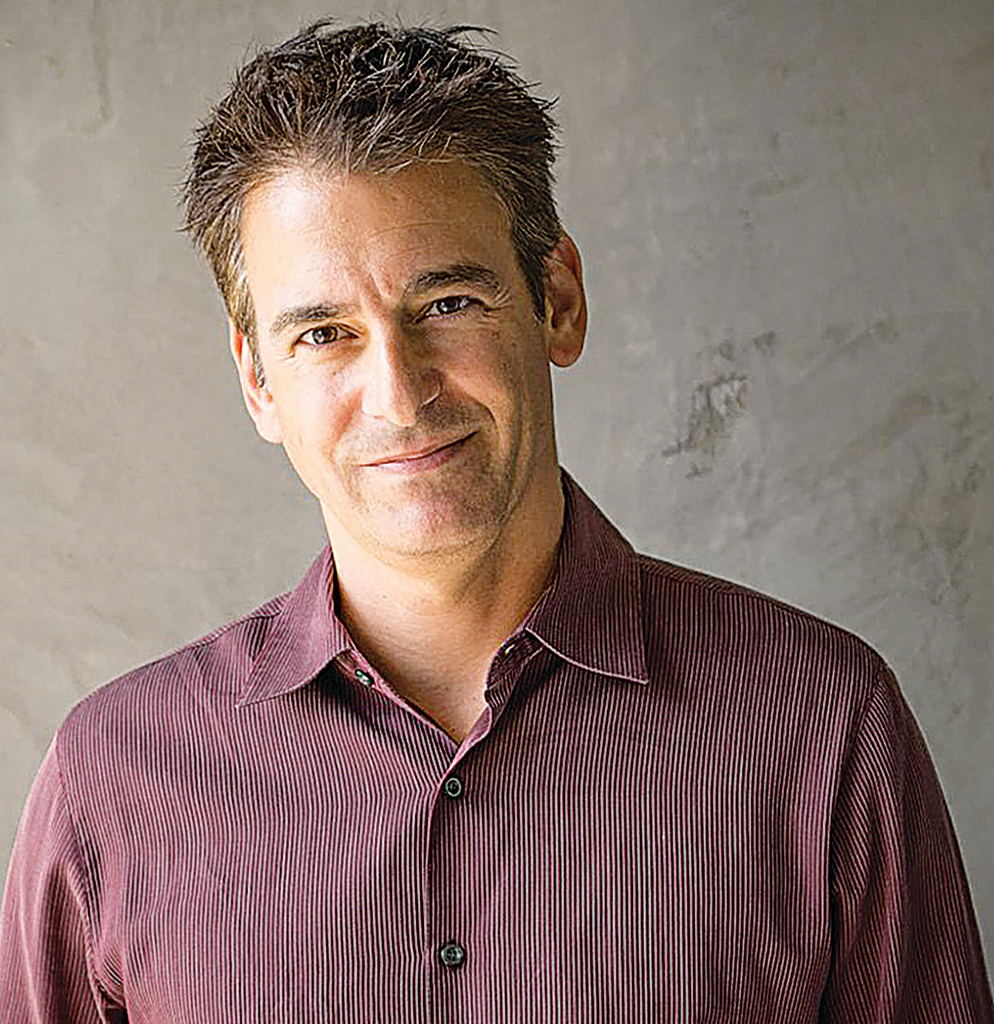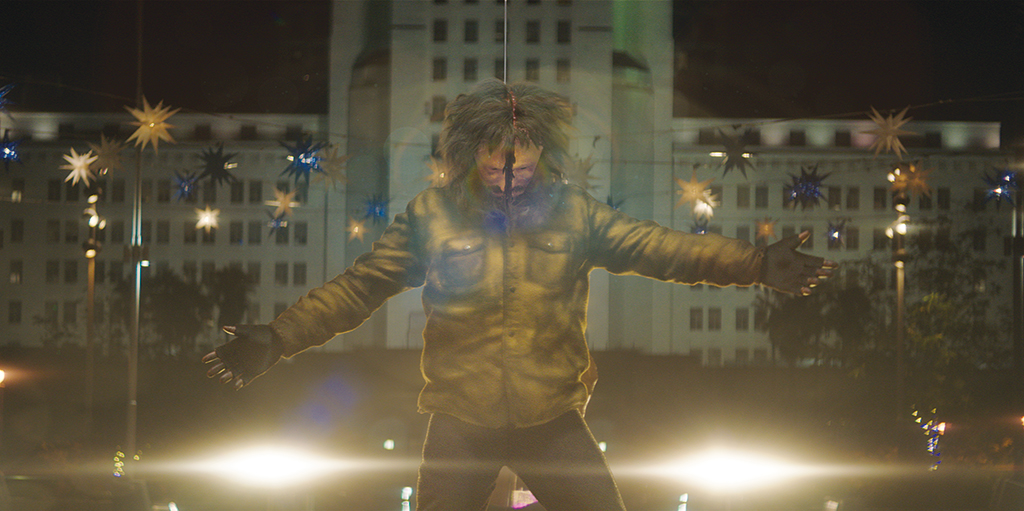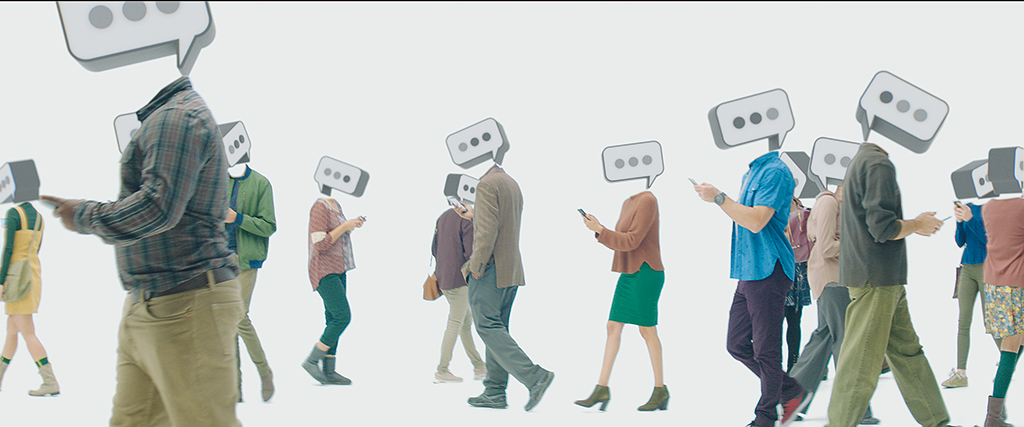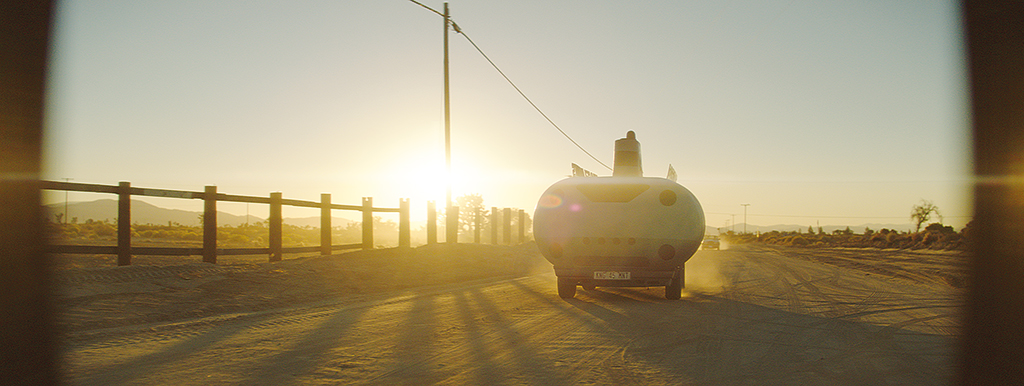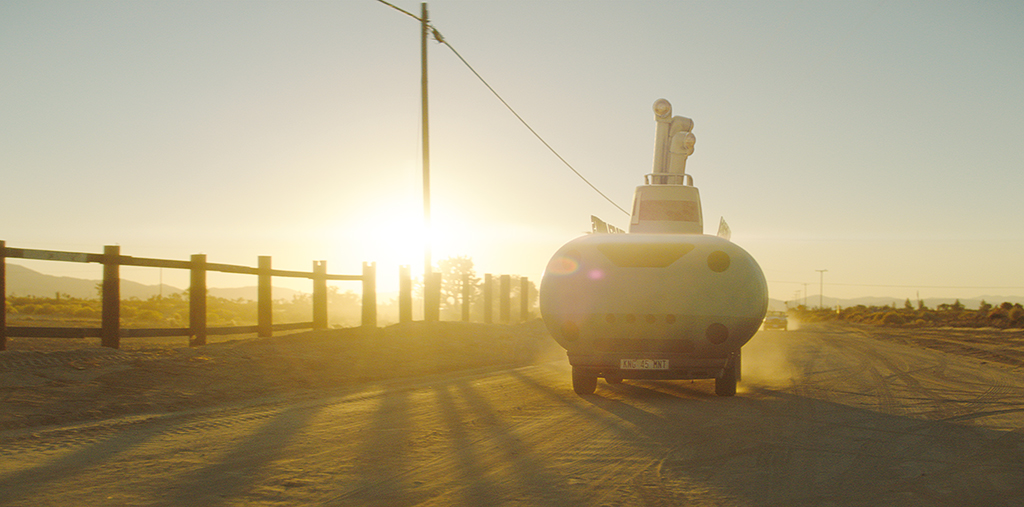‘Yeah, like that,’ Nathaniel said. We all snapped pictures of it, and when we showed up on set these things popped out of the ground that looked just like the whiteboard drawing that Wylie did.”
“Stanley Kubrick is a big influence for both Noah and Polly Morgan, the DP,” observes Pecora. “I’ve always felt that this show is like David Lynch directing a ‘70s Saturday morning kids show with Wes Anderson as the production designer and Stanley Kubrick as the DP. There are lot of those types of visuals styles and cues. This is a dream show for someone trying to get familiar with how things work with gear on set. On a typical show you have a set of primes to use for the shoot, and maybe on an extravagant show you’ll have 15 to 20 lenses that you’ll use through the course of a two-hour feature. In one episode alone on Legion we used 56 lenses plus split and strip diopters, and all kinds of trick camera gear like a Squishy Lens, which I had never seen in person before.”
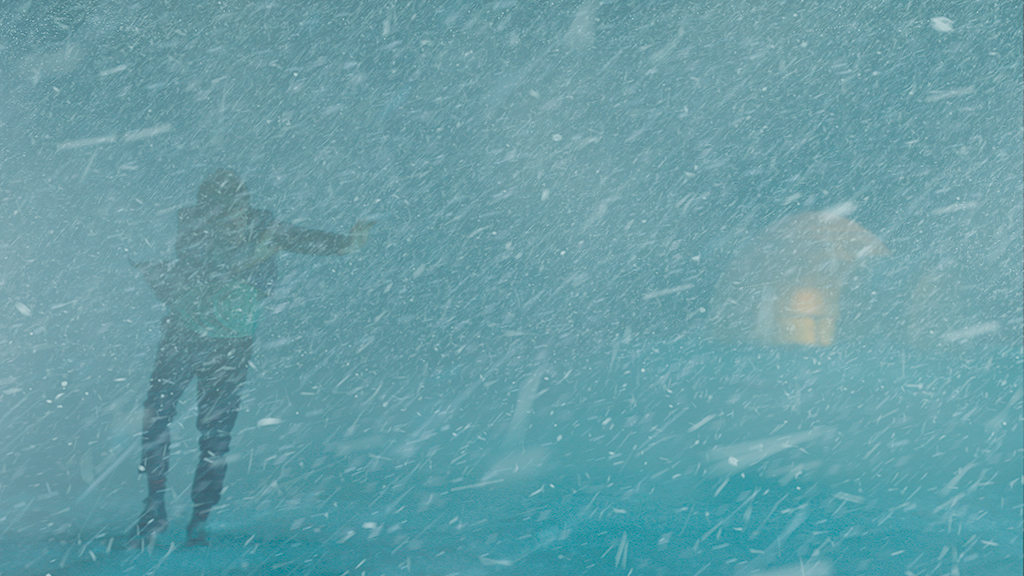
A blizzard takes place in a Jackson Pollock-inspired painting with David Haller (Dan Stevens) looking for Sydney Barrett (Rachel Keller) sitting inside an igloo.
Before Pecora joined Legion the delusion creature had already been designed. “The infant form was well on its way by the time I got involved. The grown-up form was developed as we worked on the episode. It’s a surreal creature which is its own thing apart from the infant version. There wasn’t a lot of research involved. It’s a delusion monster that comes from an egg. It has part of its morphology based on a chicken, but certainly surpassed it. It has wider legs, suckers and claws, and a more developed head. When the creature pops out of the back of Ptonomy Wallace [Jeremie Harris] you get a nice overhead shot where its legs spread out and plant on the ground. That was an homage to The Thing, directed by John Carpenter, which is one of my all-time favorite movies.”
Another interesting task was producing a singing mouse for episode six which sings “Slave to Love” by Bryan Ferry. “Muse FX has some really good animators, lighters and compositors,” remarks Pecora. “The direction from [editor] Regis Kimble kept the animation on track as far as what he was looking for. We kept thinking the mouse looked a bit like a marsupial because a [real] mouse can’t stand up and sing. There had to be some liberties taken in that regard. A very different-looking CG mouse goes into Amahl Farouk’s cell in the finale, and he talks to it. The mouse then goes into Sydney Barrett’s (Rachel Keller) bedroom and whispers into her ear. We shot HDRIs, but I believe they’re only good for a first pass of lighting. You need to get in there and do the diligence to make the creatures and characters look artistically solid.”
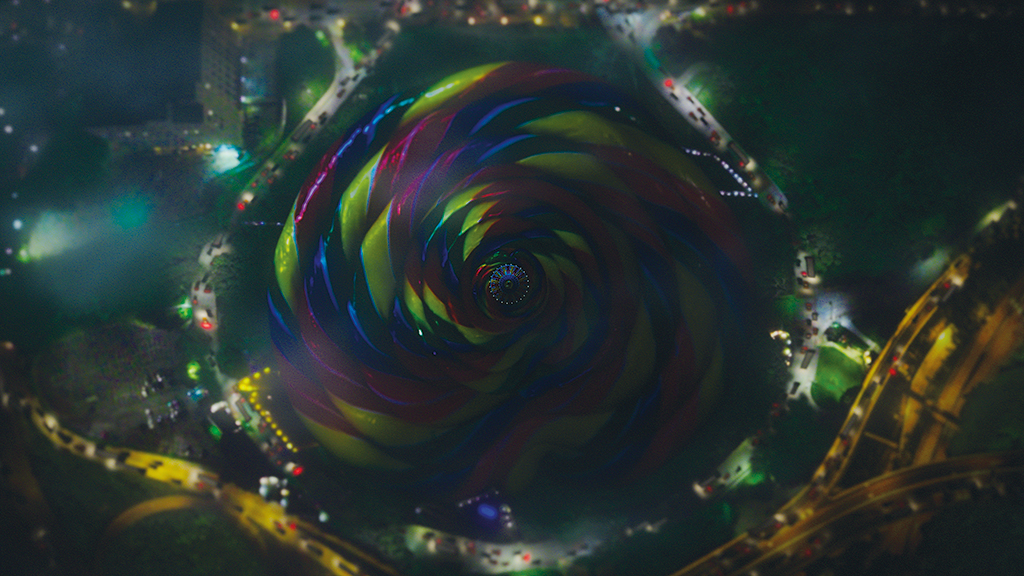
A bunch of lollipops of different sizes were bought along with a toy carousel found on eBay to create an episode intro that starts off from an aerial perspective.
“The ultimate grandfather of all challenges on this project was the schedule. We’re running against airdates. When you go into a sound mix for an episode that you haven’t got one final visual effects shot in, it can be a nail-biting experience. I can’t thank the sound team enough for their undying patience with us!”
—Lou Pecora, VFX Supervisor, Zoic Studios
Legion’s creators prefer the use of old-school stage magic over digital effects whenever possible. “We built a lot of stuff,” notes Pecora. “In episode 10 there’s this atomic structure that pops up around David and traps him. When they talked about building this thing of steel, putting LED ribbon lights on the inside and outside doing chase patterns, I thought, ‘We’re going to have to replace it with CG and repaint parts of David.’ They looked at me and said, ‘You’re not going to have to replace anything. It’s going into the show like this.’ You know how many times I’ve replaced things that I’ve heard are going into a show as built? We took a lot of pictures of Dan in case we had to rebuild him. But we didn’t need it in the end. That’s the first time ever for me that something which is supposed to be a high-tech visual effect ended up going into the show as it was built. I’m still pinching myself about that.”
A desert battle takes place in the season two finale between David Haller and Amahl Farouk. “We went to the Polsa Rosa Ranch in Acton, California, and shot this whole sequence,” explains Pecora. “Polly was insistent that she didn’t want to shoot it on bluescreen; she wanted the natural light even though we knew that the sky was going to be replaced with storm clouds and giant animations. There are so many benefits to doing it for real as opposed to on a bluescreen. Mark Byers’ awesome special effects team built this track and a platform on a cart. They strapped Dan and Navid on a pair of bicycle seats and floated them across the ground. We had these giant cranes orbiting with Libra Head stabilizers keeping jitter and shake at bay. Camera operator Mitch Dubin was able to do these creative camera moves that looked really cool. You’re not going to get that on a bluescreen stage. I went out there the next day with a crew to shoot clean plates of desert with all of the tracks removed to be used in the clean-up.”
In addition to lots of paint and roto, extensive simulations were required for this sequence. “The clouds had to look real and natural but move in unnatural ways,” explains Pecora. “A supercell normally spins and rotates but our version approaches and expands. We found that when you’re far away, you’ve got to put more movement in the clouds, and when you’re close up you need to put less movement, otherwise, they look like time-lapse photography.”
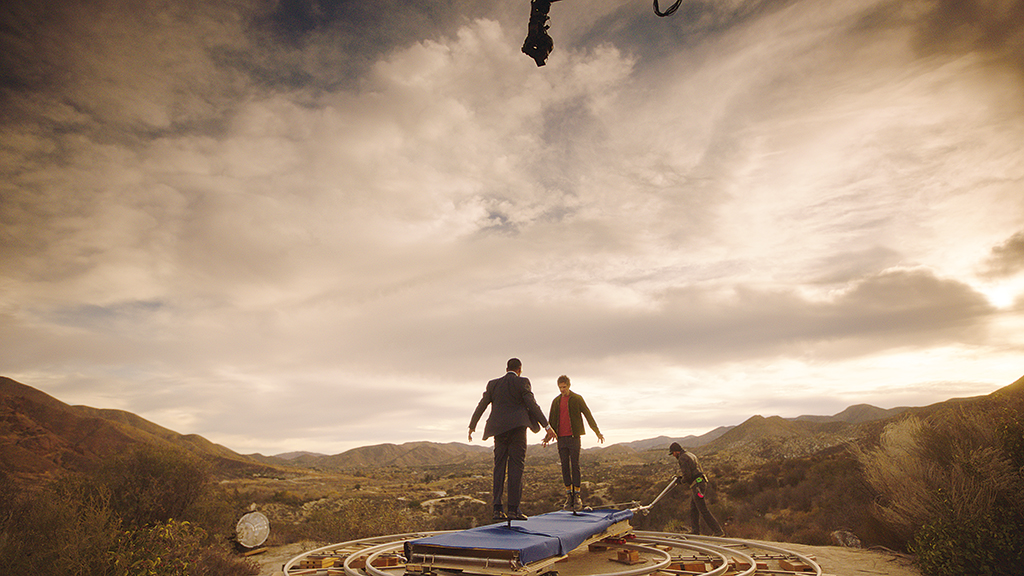
Live-action plates were shot at Polsa Rosa Ranch for the dramatic showdown between David Haller and Amahl Farouk (Navid Negahban).
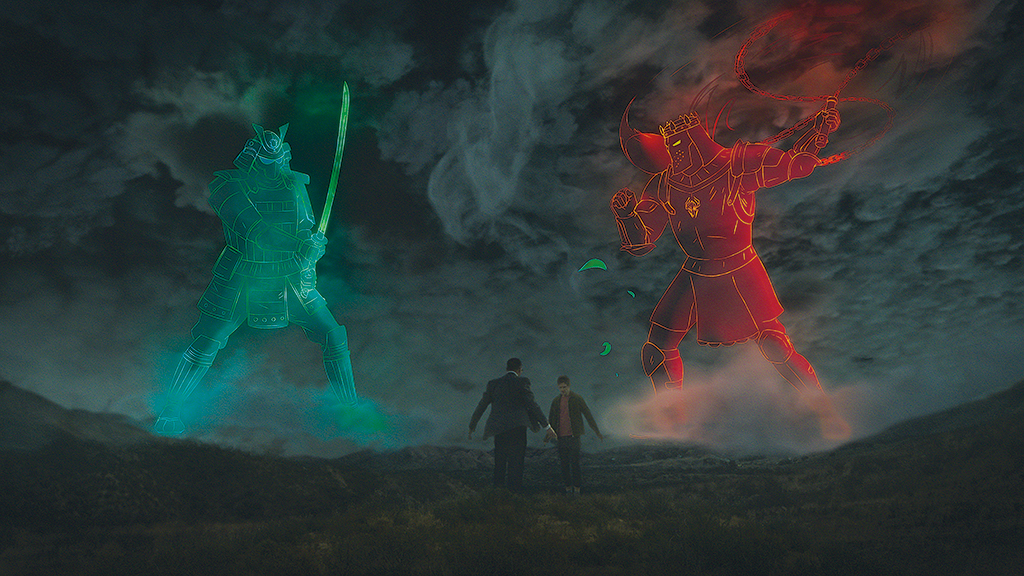
Previs artist Lochlon Johnston was critical in helping to choreograph the battle in the sky sequences.
“In one episode alone on Legion we used 56 lenses plus split and strip diopters, and all kinds of trick camera gear like a Squishy Lens, which I had never seen in person before.”
—Lou Pecora, VFX Supervisor, Zoic Studios
Creative input was welcomed from everyone on the production team. “We had this situation where Sydney Barrett is walking through this art gallery and there’s a framed greenscreen on the wall. She’s in this Egon Schiele exhibit where David keeps finding her. ‘What is this greenscreen suppose to be?’ I asked editor and producer Regis Kimble. He told me, ‘We are supposed to find Syd sitting inside an igloo in an abstract painting.’ That was the direction that I had to act on. We decided to make our own Jackson Pollock painting. We push into it and all of the layers of the blobs of paint become individual panes that you go through. You whip through the paint and find moving snow which transitions into a snowstorm, then an igloo and finally Syd sitting inside. Compositor Brian Harris really owned that shot.”
“For another episode, we got to come up with the intro,” reveals Pecora. “The opening shot had to find its way to Lenny Busker (Aubrey Plaza), David and Oliver Bird (Jemaine Clement) riding on a carousel. Getting to [the carousel] was a little undeveloped when I started on the shot, so I mocked up this idea of a stack of giant lollipops with a carousel in the middle that are all spinning against each other. The idea went over well with show editor Todd Desrosiers, Regis and Noah, so we bought a bunch of lollipops of different sizes and found a toy carousel on eBay for $30. We shot the pieces individually on a Lazy Susan and comped them together. We showed Noah, and he said ‘Cool. Can we plant it in the ground somewhere and have cars and traffic driving around it, like the size of the Colosseum or the Pentagon?’ In the end we have this giant lollipop from an aerial perspective and then you’re suddenly into the shot. That is an example of how collaborative the team is on this show, and it is absolutely a blast to be part of.”
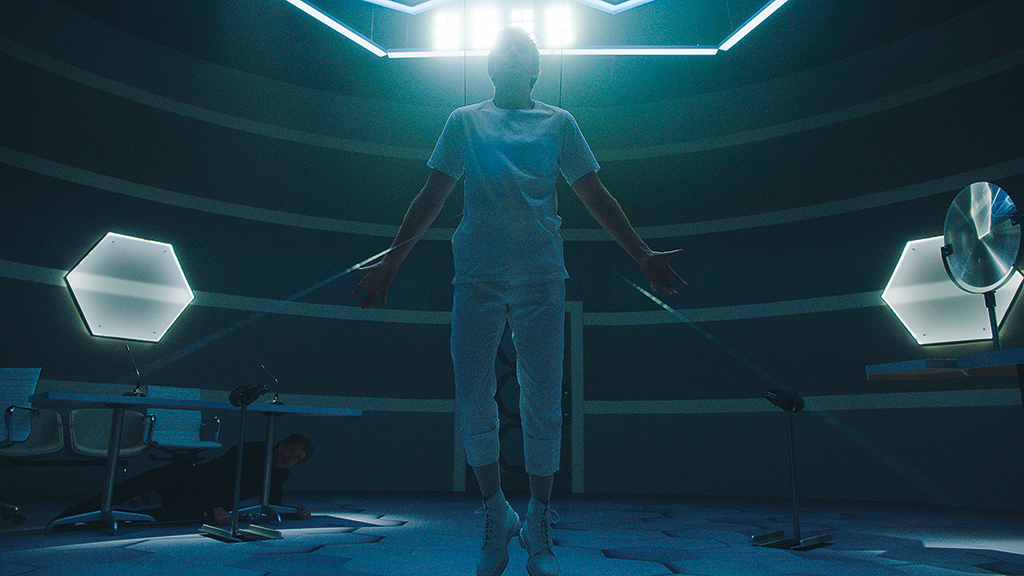
A practical atomic-structured cell was constructed and lit with LED lights while Dan Stevens was supported by wirework.
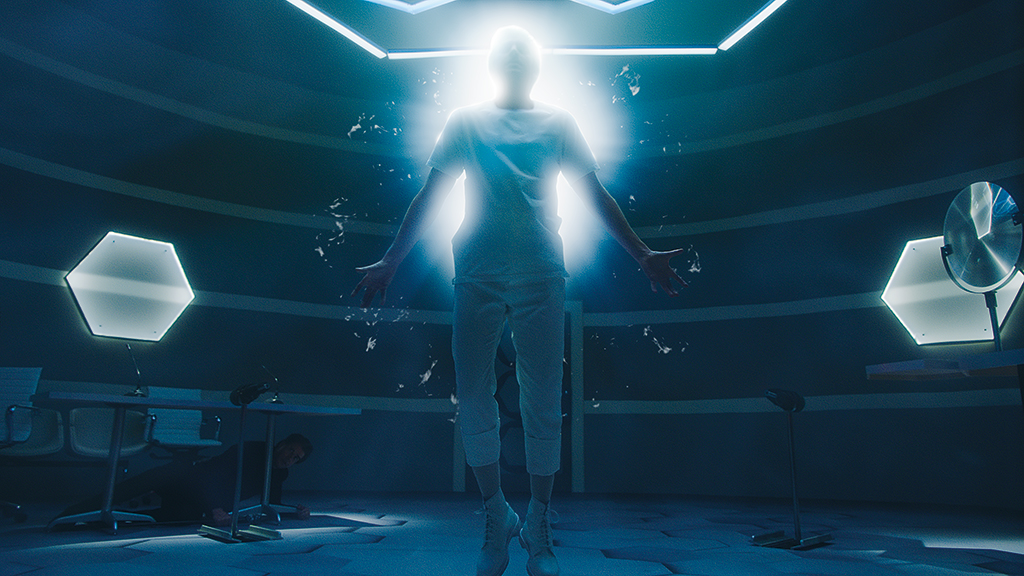
The wires were digitally painted out and the lighting made more luminescent to emphasize the levitational abilities of the imprisoned David Haller.
Complicating matters is Legion being delivered in 4K and dynamic range, especially for the educational segments narrated by Jon Hamm. “That was an unanticipated challenge,” states Pecora. “It’s simply called The White Space. There are all of these different scenes that play out from a girl on a cellphone, to a bunch of cheerleaders having this twitch disorder that is somehow communicable, to a Salem-style witch hanging, to Farouk fixing his car which turns into a time machine. The set consists of white curtains with white floors and white walls. We were supposed to ‘just’ clean up the white. Not a problem. However, as soon as you throw White Space on a dynamic range monitor you see things that you don’t even see on DPXs for a film-style QC. We ended up having to roto every single thing in the White Space. We replaced the many different shades of white with a uniform one. We did the Red Space in episode six and that was not much easier for some reason.”
“Oddly enough, the weirdest little things are the big challenges,” notes Pecora. “There’s a scene where this video plays out in these pools of water. Rudimentary aquariums were built on top of picnic tables that were filled with this blue liquid. I was trying to figure out what that video effect looks like without making this cheesy scene that you’ve seen a million times with chroma shifting on the edges and distortion or water ripple. We had to come up with something clever in a hurry. The ultimate grandfather of all challenges on this project was the schedule. We’re running against airdates. When you go into a sound mix for an episode that you haven’t got one final visual effects shot in, it can be a nail-biting experience. I can’t thank the sound team enough for their undying patience with us!”
In spite of the many challenges and the merciless schedule, working on Legion has been a career highlight for Pecora. “If I could describe the whole process in two words it would be ‘unbridled creativity.’ Legion is a show that has everyone in all departments firing on all creative cylinders.” He adds, “There are times when you get near to the end of a show and are counting the days for it to be over, but that was not the case with Legion. This was the best time I’ve ever had on anything I’ve worked on in 25 years. I was missing Legion before it was even over!”
